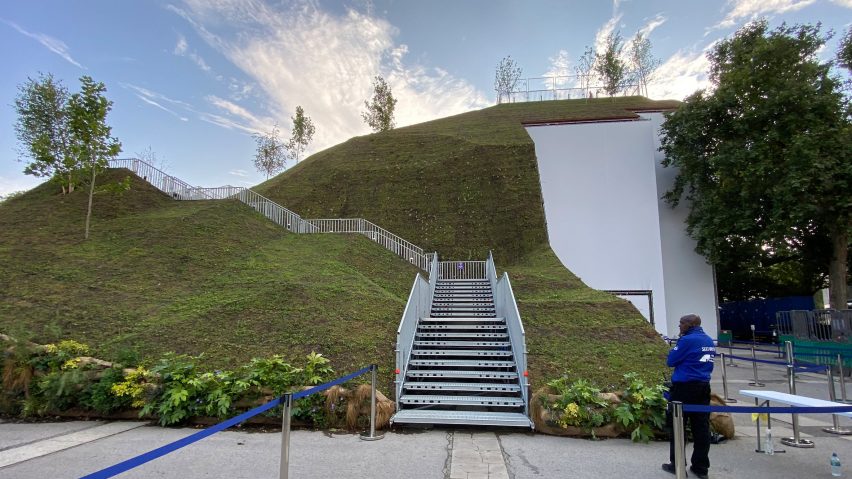
Marble Arch Mound has a "serious message" says MVRDV in defence of attraction
Dutch studio MVRDV has responded to the criticism of its fake hill in central London and accepts that it opened before it was ready.
The £2 million Marble Arch Mound has been widely criticised with Westminster City Council forced to suspend booking and issue visitors refunds.
MVRDV admitted that the attraction near the Oxford Street shopping destination opened before it was fully complete.
"Some elements were not ready, and it would have been better to wait until the greenery looked better," MVRDV told Dezeen. "But let's give nature a chance."
"Working with plants is unpredictable"
Built alongside Marble Arch, which was designed by architect John Nash in 1827, the attraction was created to encourage people to visit Oxford Street following the end of coronavirus restrictions in the UK.
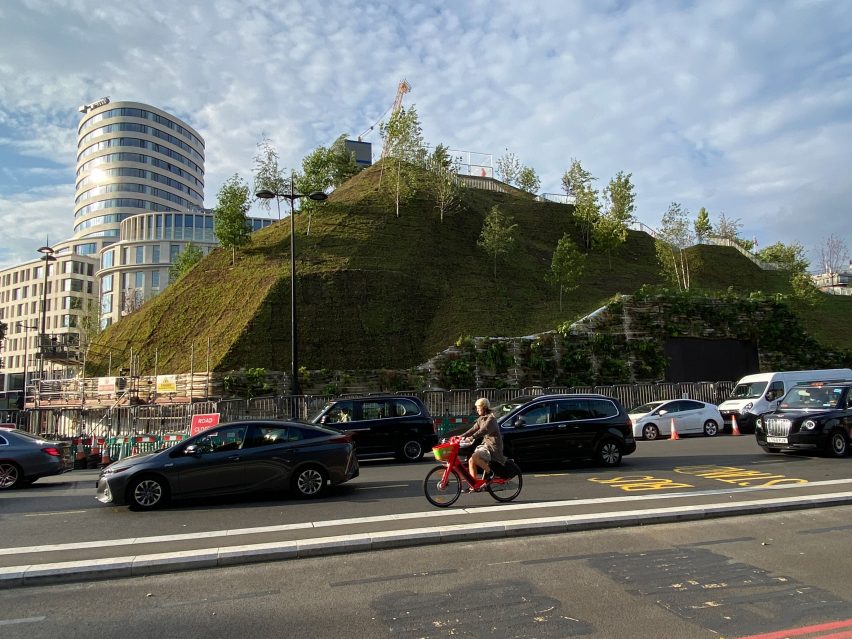
However, the sedum turf that covers the artificial hill does not appear to be healthy, something that the studio attributes to the "challenging" weather in London.
"The mound is a living installation, and working with plants is unpredictable, especially in challenging weather conditions," said MVRDV.
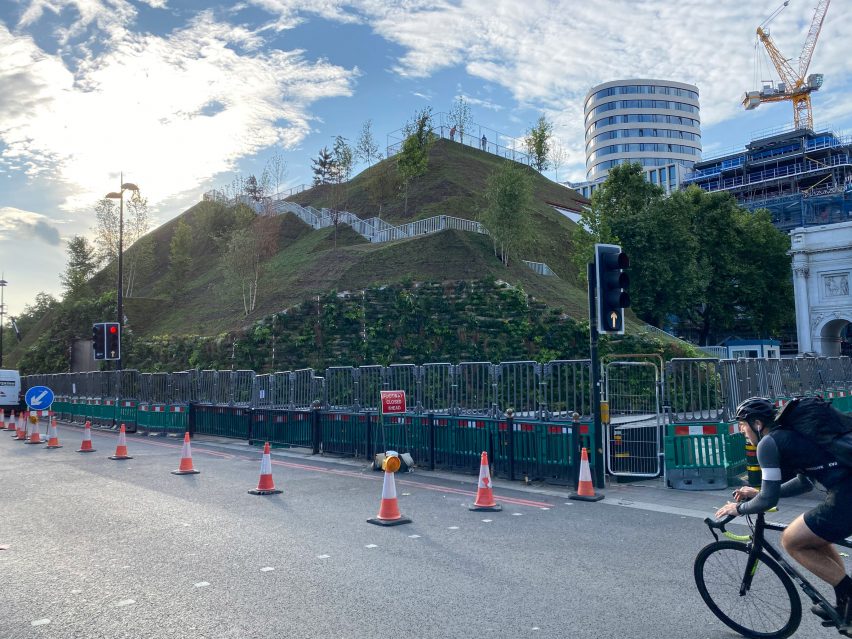
"The unexpected dry weather in London has turned the sedum brown and thin, but sedum can survive a drought," it continued.
"Marble Arch Mound will stay until January so the greenery will change with the seasons. After a week of rain, it will already look different."
"Original plan was to use soil"
According to MVRDV, the mound was originally going to be covered in soil. However, this was replaced with sedum turf when the size of the installation was reduced during the design process.
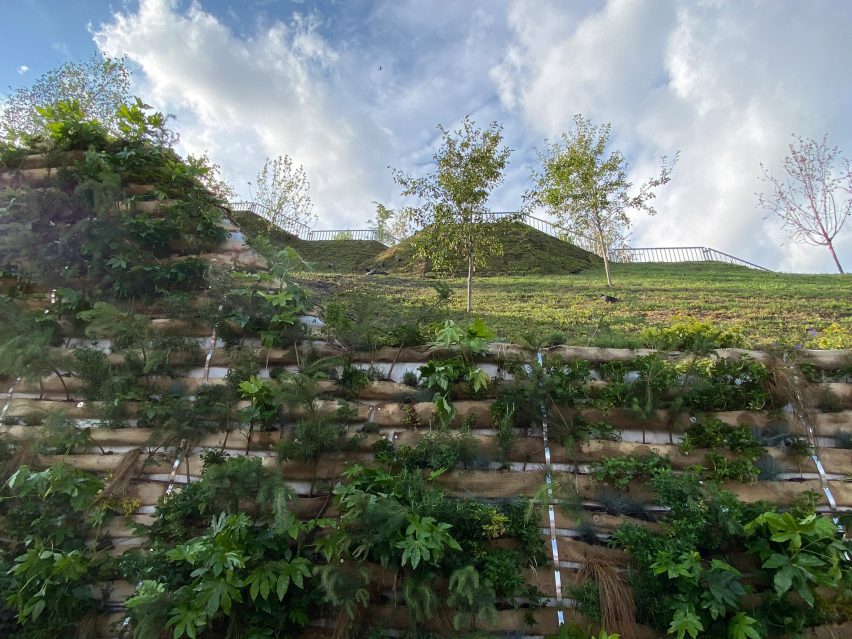
"We originally wanted the hill to cover the arch totally," said the studio. "Conservation experts advised against that, so the solution was a hill leaving room for the arch."
"The original plan was to use soil but because of its weight, and the slopes resulting from the smaller footprint, sedum was used," it continued.
"Adding plants here is a symbol of where we need to go"
Despite the current issues with the installation, MVRDV insists that the attraction could still be a success and has an important message.
"Marble Arch Mound (MAM) is a folly in the best British tradition," said the studio. "A mound that is not really a mound in the middle of London – overlooking Hyde Park and extending it back to its original boundary – was the basic idea."
"There is also a serious message: how important it is to add nature to cities to combat climate change," it continued.
"We think adding plants here is a symbol of where we need to go in the future, greening the city."
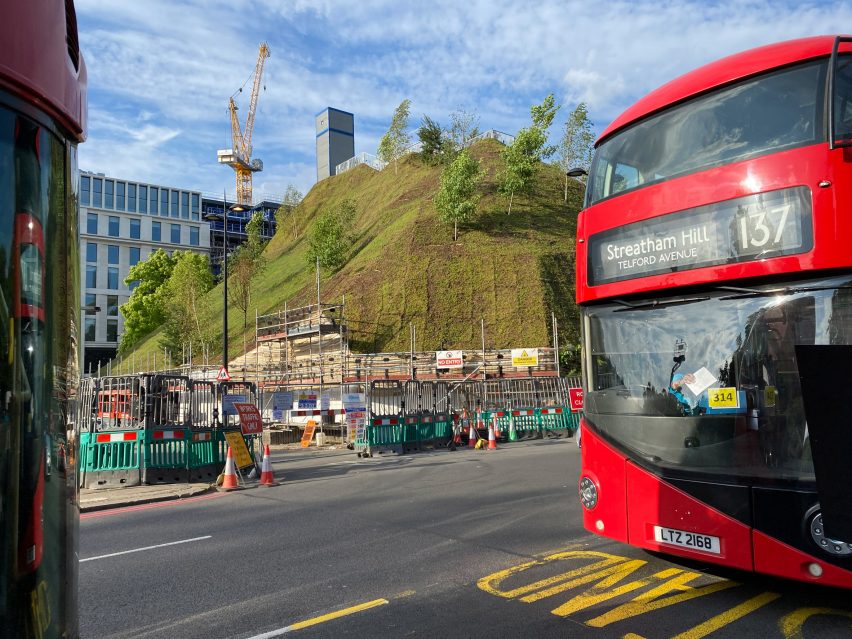
MVRDV co-founder Winy Maas has previously advocated adding more greenery into our cities.
In an interview with Dezeen as part of Virtual Design Festival, he explained how cities could be turned into havens for nature. A concept he dubbed the "Green Dip".
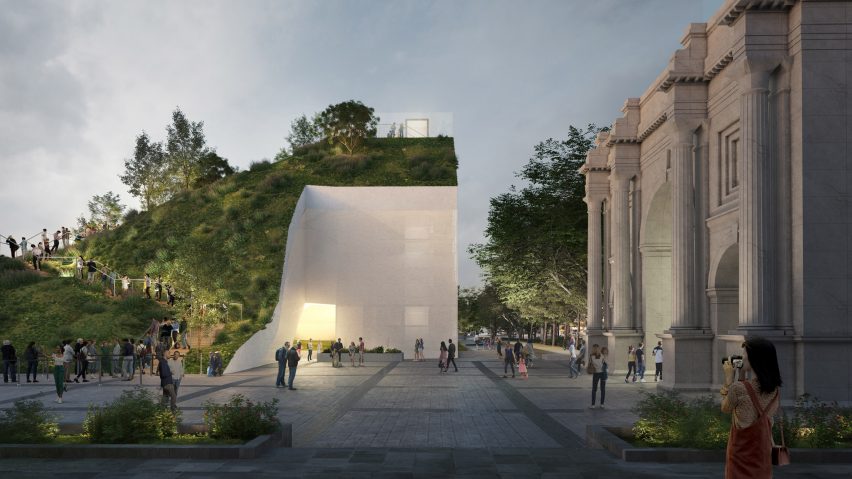
"I think it would be good to dip our planet in green," he told Dezeen, "to somehow transform places like Hong Kong into a green dream."
Westminster Council intends to reopen booking in the near future once the planting has been improved.
Photography is by Dezeen.